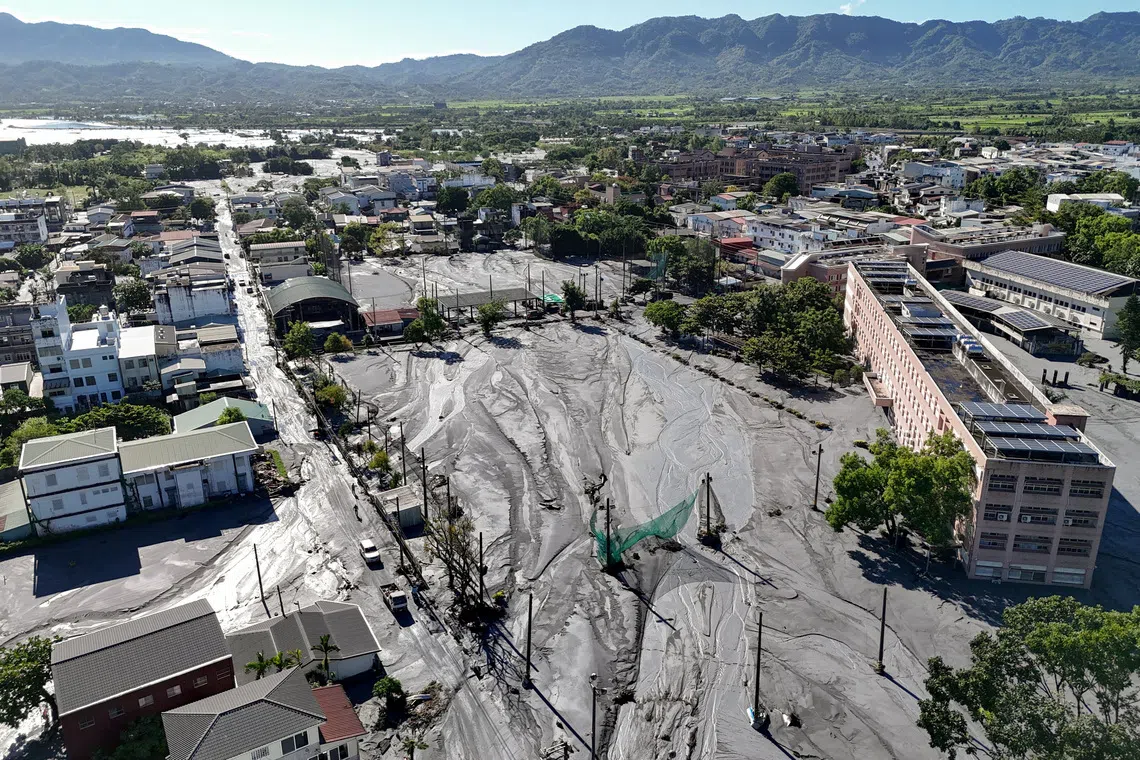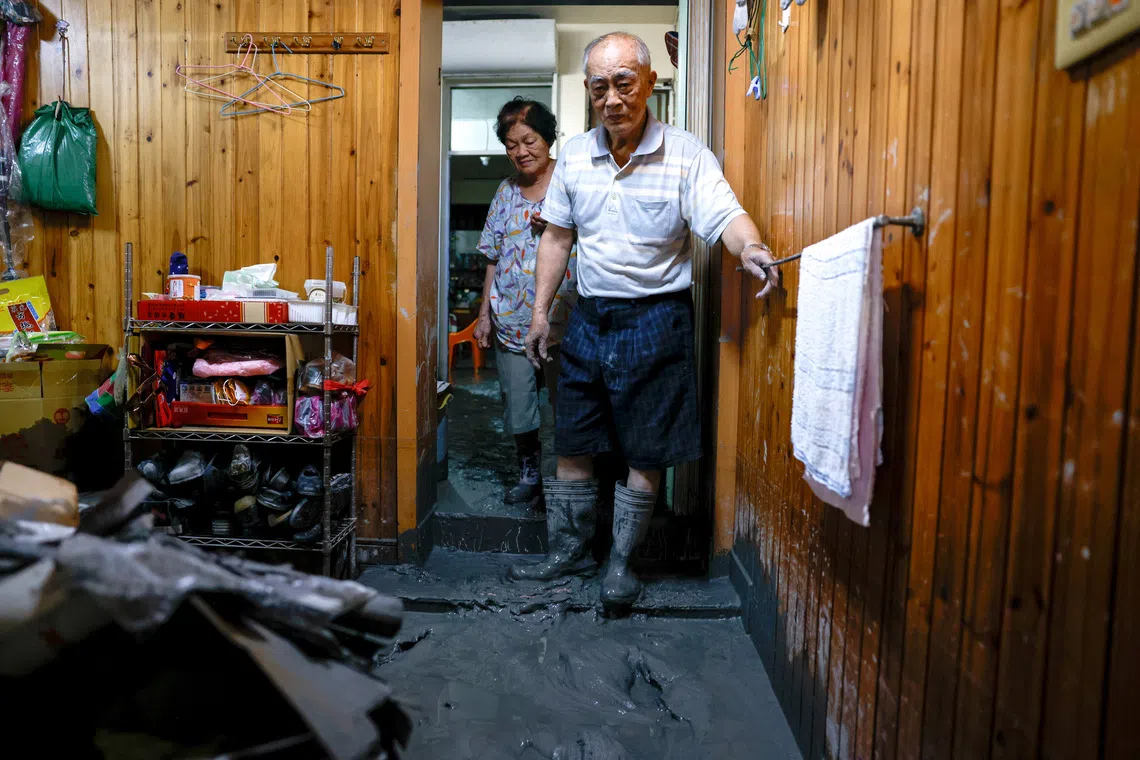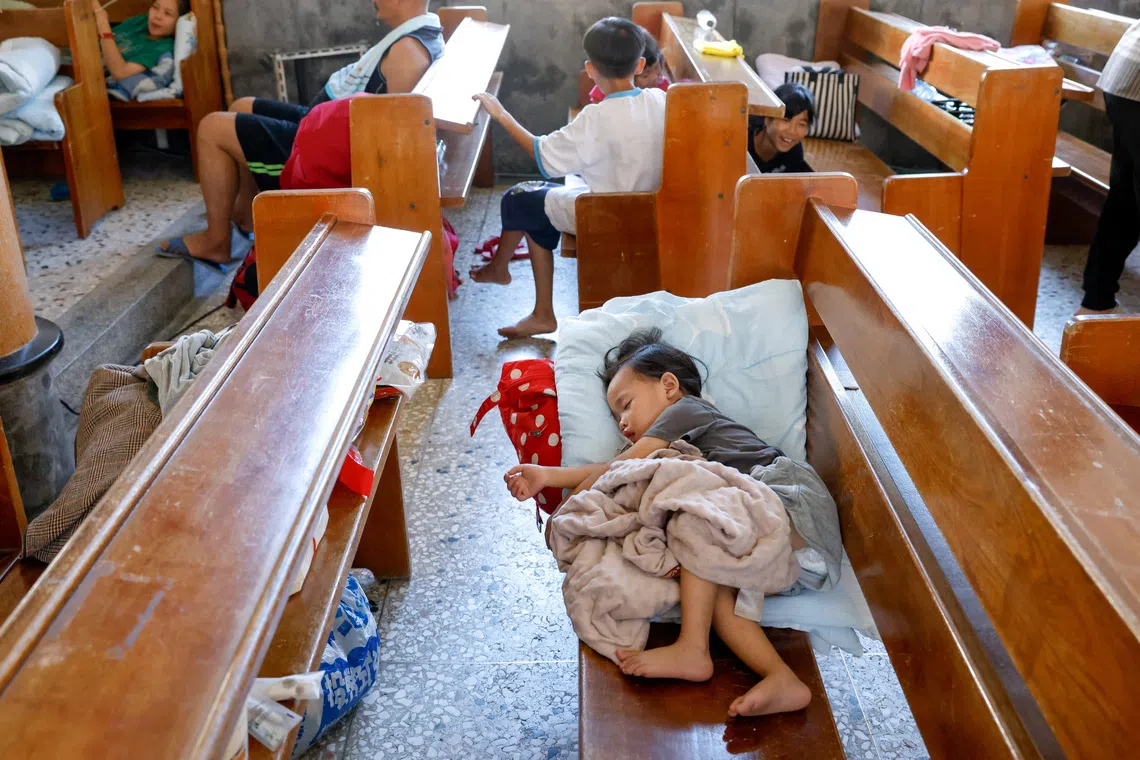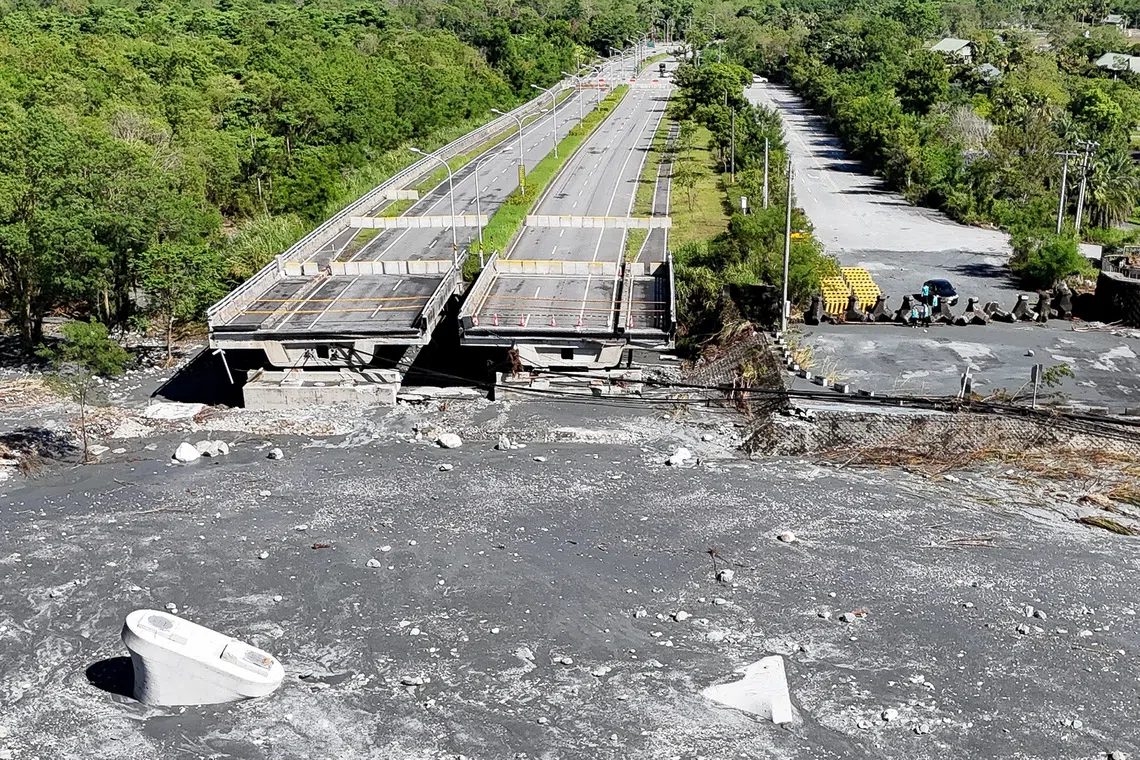Taiwan looks for missing after Super Typhoon Ragasa as questions persist on evacuations
Sign up now: Get ST's newsletters delivered to your inbox

Mud cover areas of Hualien due to flooding, following Super Typhoon Ragasa.
PHOTO: REUTERS
Follow topic:
HUALIEN, Taiwan – Taiwan searched on Sept 25 for 33 missing people after a strong typhoon flooded a lake above a small town on its remote east coast, leading to a disaster as many victims were too elderly to follow evacuation guidance to go upstairs in their homes.
The deaths, revised down to 14 from 17, followed heavy rain brought by the outer bands of Super Typhoon Ragasa to Hualien county,
Subtropical Taiwan normally has a well-honed drill for evacuations ahead of typhoons, especially along the mountainous and sparsely populated east coast, which limits casualties.
But the number of dead this time has prompted questions about whether an order to head upstairs from the ground floor was appropriate, and what could have been done differently.
“Beyond mourning the victims, we must investigate the causes of death, which predominantly occurred on the first floors,” Premier Cho Jung-tai told a Cabinet meeting on Sept 25.
“Clarifying these factors is essential for refining future evacuation protocols.”
Elderly population
Many rural parts of Taiwan, especially in the east, have large elderly populations as young people move to cities to seek better job opportunities.
The elderly with disabilities made up the majority of the dead, with many found on the first floors of homes, Hualien official Lin Jung-lu told Reuters.
“They had difficulty walking,” he said.

Residents inspecting their homes, covered in mud after flooding from the typhoon.
PHOTO: REUTERS
Mr Chang Chih-hsiung, a youth representative of the Fata’an tribe of the Amis indigenous group, which calls Hualien home, said the digital gap and ineffective communication were among the reasons some elderly residents did not evacuate.
“Some of them are not familiar with using cellphones,” he told Reuters. “The village chief had held briefings, but people didn’t think it was that serious until it happened.”
Another problem was the sheer scale of flooding and the difficulty of predicting where it could hit.
Parts of the village were entirely evacuated with people moved to shelters, but that area escaped the flood, Mr Chang said. Meanwhile, other spots where many opted to move to higher floors, however, were hit far worse than expected.

A child sleeping on a bench inside a church that has been turned into a shelter.
PHOTO: REUTERS
Cut bridge
Mr Wang Tse-an, head of the Dama village in the Guangfu region, said a mandatory evacuation order meant the hamlet suffered no deaths.
“Dama was the first to be hit, but the damage was the smallest,” he said.
“That’s because we designated houses for mandatory evacuation. But when the flood came to other villages, people there thought they could just do ‘vertical evacuation’. They did not expect the flood to reach that high.”
While Guangfu’s train station has resumed services, the main highway has been cut off after flood waters swept away a bridge.

A drone view showing a collapsed bridge.
PHOTO: REUTERS
Drone imagery from Reuters showed only the bridge supports left in the river bed after the road links snapped at both ends. In other images, homes were marooned in mud that blocked entrances.
Mr Wang said many meetings had been held since the lake was discovered in July, with several briefings delivered to villagers about the coming dangers and evacuation plans, some in the Amis language, as not all residents spoke Chinese.
The rain has stopped, but the government is maintaining warnings on the barrier dam in a remote mountain area behind Guangfu.
The tricky issues of how to tackle the lake – though much smaller than before – and prevent another disaster remain.
Agriculture Minister Chen Junne-jih said using explosives to blow up the bank holding back the lake was too dangerous, as it could set off more landslides.
“While the red warning is still in place, please do not go near to the river,” he told reporters in Taipei. REUTERS

